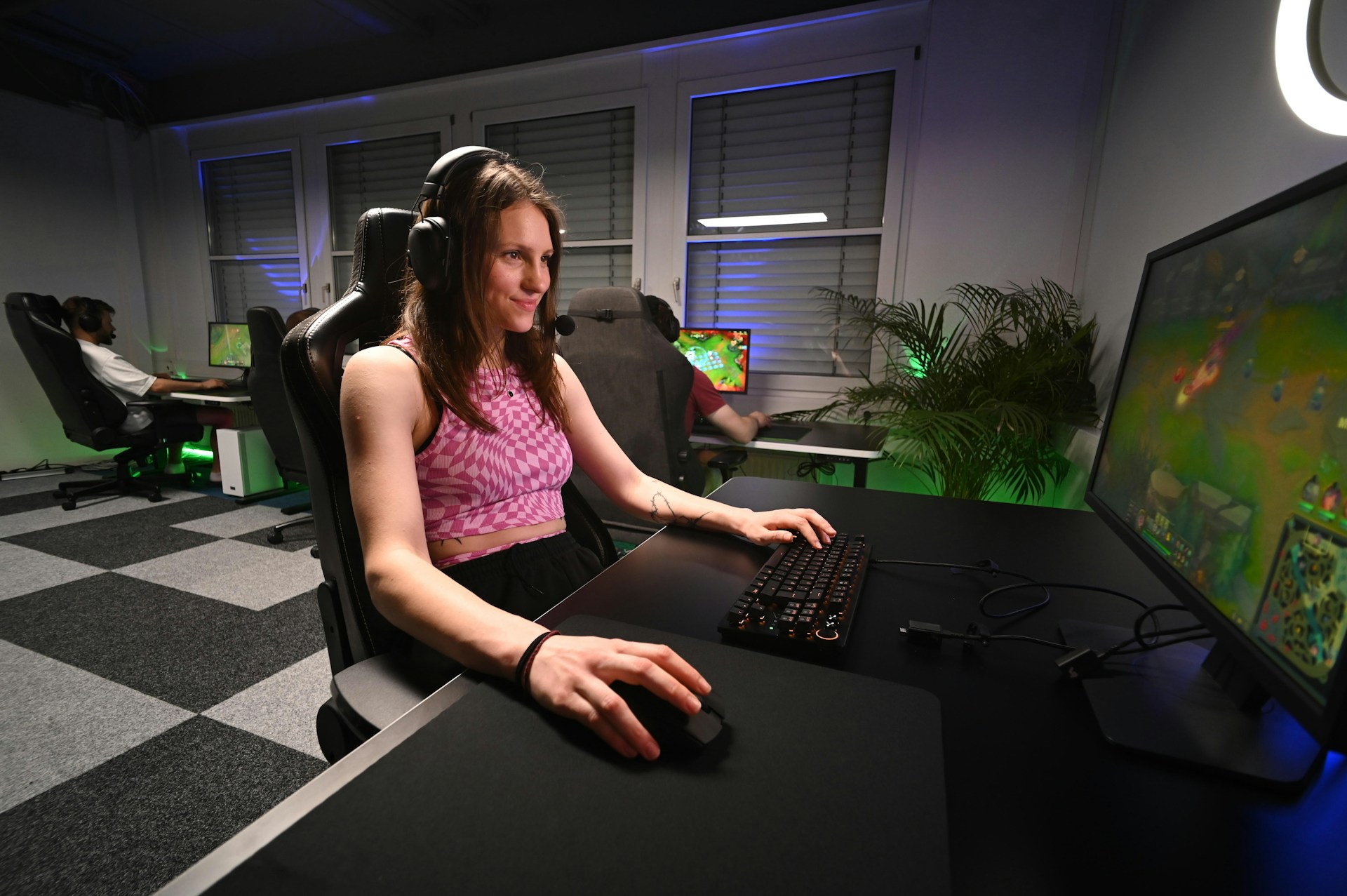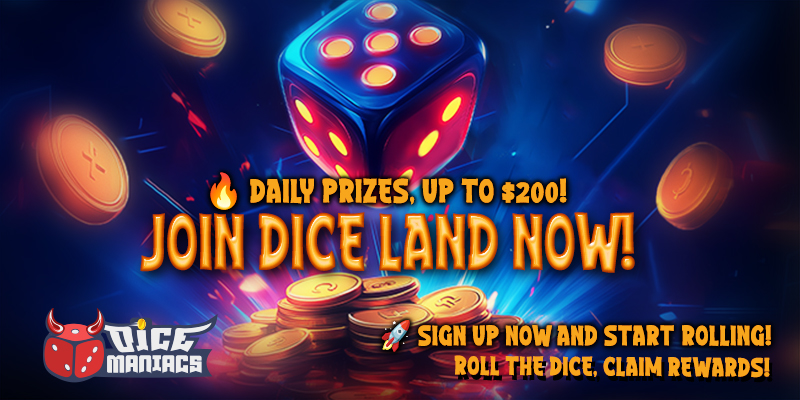Imagine being on the brink of victory. The virtual battlefield is alive with action, and your reflexes are tested at every turn. In gaming, reaction time is more than just a skill; it’s a decisive factor that can mean the difference between triumph and defeat. But what exactly is reaction time in the context of gaming? Essentially, it’s the swift transition from observing cues in your environment to executing the appropriate actions through your controller or keyboard. This split-second response is crucial across a multitude of gaming genres, from the high-octane world of first-person shooters to strategic real-time simulations. Let’s master how to improve gaming reaction time.
Boosting Gaming Skills: How to Improve Gaming Reaction Time
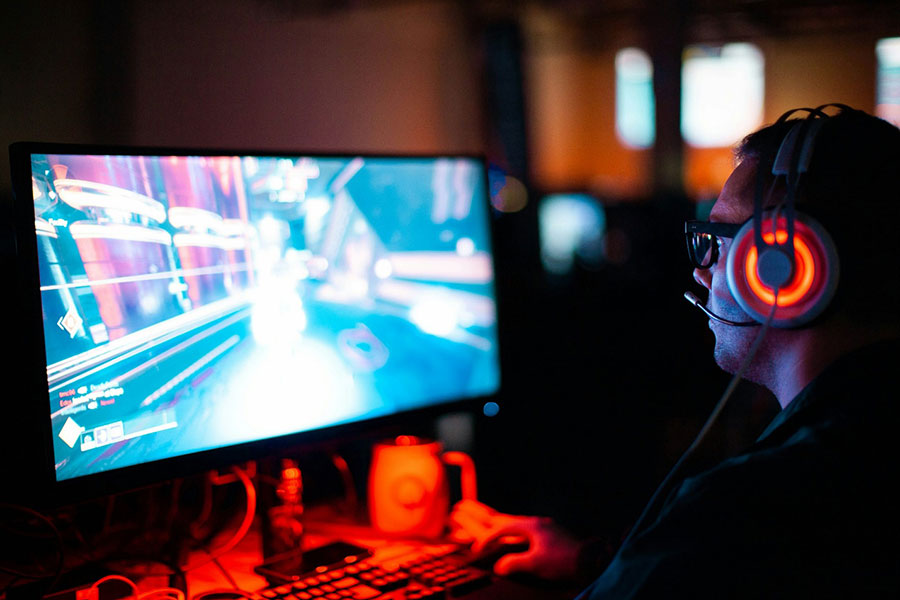
Reaction Time: The Science
Let’s delve into the science behind reaction time. At its core, reaction time is a fascinating dance between your body and brain. It begins with a stimulus—perhaps an enemy appearing onscreen—triggering sensory input. Your eyes send signals to your brain, which processes this information and determines the necessary response. This decision results in motor output, the physical action you take to win the day. While it may sound like a lot, this complex process happens within milliseconds, underscoring why an edge in reaction time can be so significant in gaming.
Factors Influencing Reaction Speed
1. Age
Time, it seems, isn’t always on our side. Youth is often associated with quicker reflexes due to neurological efficiency. However, as we age, these processes can slow slightly. Fear not, though—consistent practice can mitigate this effect, ensuring that age need not be a barrier to agile gaming.
2. Sleep
Ever tried gaming after a late night? Sleep deprivation can wreak havoc on your reaction times. Proper rest is essential for peak mental performance and ensures your synapses fire quickly and accurately. Creating a relaxation routine before bed can significantly improve your gaming capability the next day.
3. Stress
How to improve gaming reaction time? Stress management. We all know the feeling of tight shoulders and a racing heart during intense gaming sessions. Stress can negatively impact focus and reflexes, slowing down your response time. Incorporating stress-management techniques like deep breathing or taking quick breaks can keep you cool and collected when it matters most.
4. Nutrition
Like any high-performance activity, what you consume can play a vital role in gaming. Adequate nutrition fuels your brain, ensuring it functions optimally. A balanced diet rich in omega-3 fatty acids and antioxidants can improve cognitive function and, by extension, reaction time.
5. Focus & Concentration
In the heat of the game, staying laser-focused is crucial. Distractions are detrimental to reaction time. Techniques that enhance concentration, such as mindfulness exercises or meditation, can fortify your mental discipline and keep your gaming sharpness finely tuned.
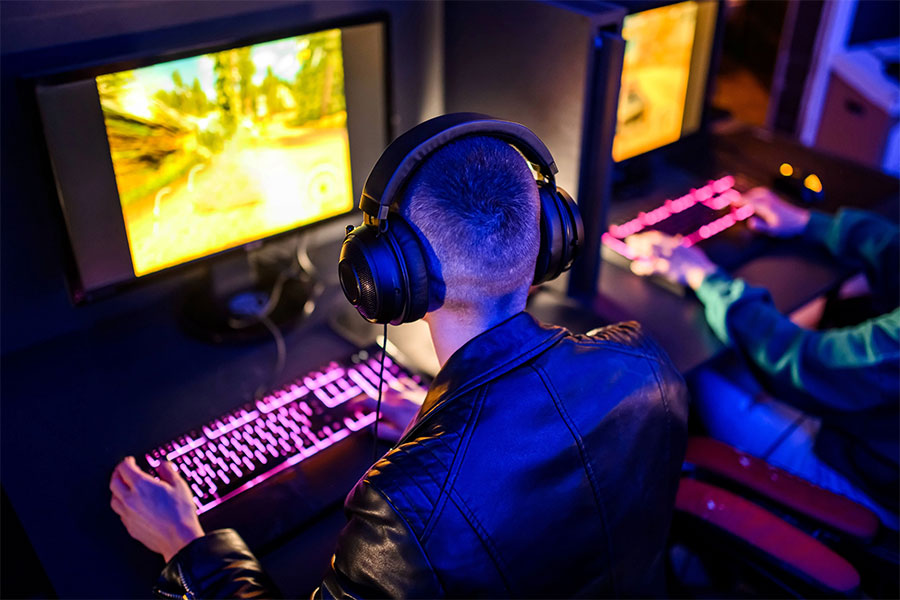
6. Practice
Perhaps the most significant factor is practice, the cornerstone of improvement. Like an athlete honing their craft, consistent, focused practice can enhance your reaction speed. Diversified gaming experiences and reflex-testing drills are essential components for reaching your reflexive potential.
Actionable Techniques for Faster Reactions
1. Regular Reaction Time Training Exercises
Engaging in specific exercises designed to sharpen reflexes can be particularly effective. Apps and games like Brain Age or Lumosity offer targeted tasks that challenge your brain’s speed and efficiency, helping you react faster in your favorite games.
2. Optimize Gaming Setup
A comfortable and well-organized gaming environment can greatly impact performance. Ergonomics are key—an ergonomic chair, proper desk height, and responsive peripherals like a high-DPI gaming mouse or a mechanical keyboard can significantly boost your reaction time by ensuring every movement is seamless and precise.
3. Focus and Concentration Techniques
Implementing focus techniques such as mindfulness or breathing exercises can create an optimal mindset for gaming and help us in knowing how to improve gaming reaction time. Start sessions with a few deep breaths to center yourself, or incorporate meditation into your routine to enhance both focus and calmness.
4. Healthy Lifestyle
Incorporating regular physical exercise, maintaining a balanced diet, and ensuring adequate sleep work in tandem to boost reaction times. Exercise improves blood flow to the brain, enhancing cognitive functions, while proper diet and sleep stabilize them. The synergy of these elements keeps you at the top of your game.
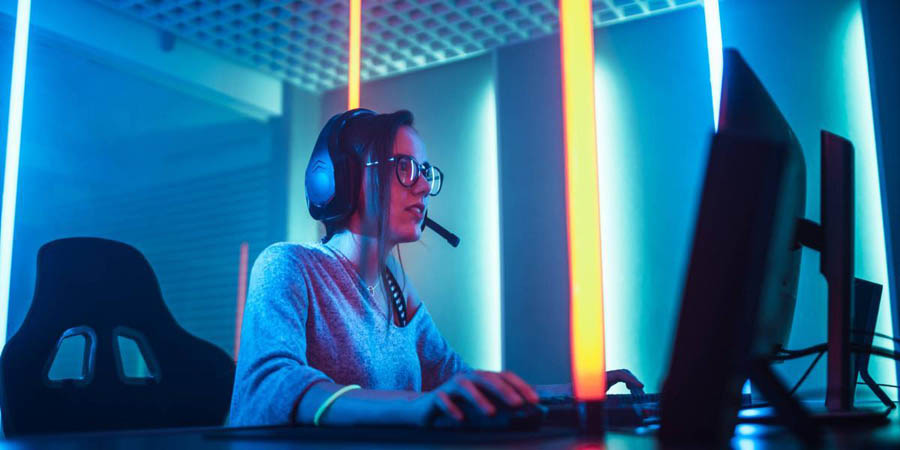
Tools & Resources for Reaction Training
1. Online Reaction Time Tests
Numerous websites offer simple yet effective reaction time tests. Visit sites like Human Benchmark to regularly test your reaction speed, allowing you to gauge improvement over time and adapt your training methods.
2. Dedicated Reaction Training Software/Websites
Software such as Aim Lab or Kovaak 2.0 is specifically designed to simulate gaming environments and train your aim and reaction times. These tools offer a structured approach to improving your reflexes, tailored to various types of games.
3. Specific Game Modes Designed for Reaction Training
Popular games often feature modes or mods aimed at honing reaction time. For instance, the practice maps in Counter-Strike: Global Offensive focus on aiming and reflex drills, providing an engaging way to build your skill while having fun.
Consistency & Practice Regimen
To truly master reaction time, consistency is your best ally. Regular practice inherently builds speed and precision, transforming your reflexes from good to great. Developing a practice schedule and setting specific goals can help maintain focus and track progress over time. Record improvements to stay motivated and identify areas that need more work.
Deepening Your Quest: Mastering Gaming Reaction Time
To further enrich our journey into how to improve gaming reaction time, let’s delve deeper into tailored strategies and insights. From exploring how different genres offer unique challenges to understanding cognitive techniques that enhance our natural abilities, the path to mastering our reflexes is both diverse and personal.
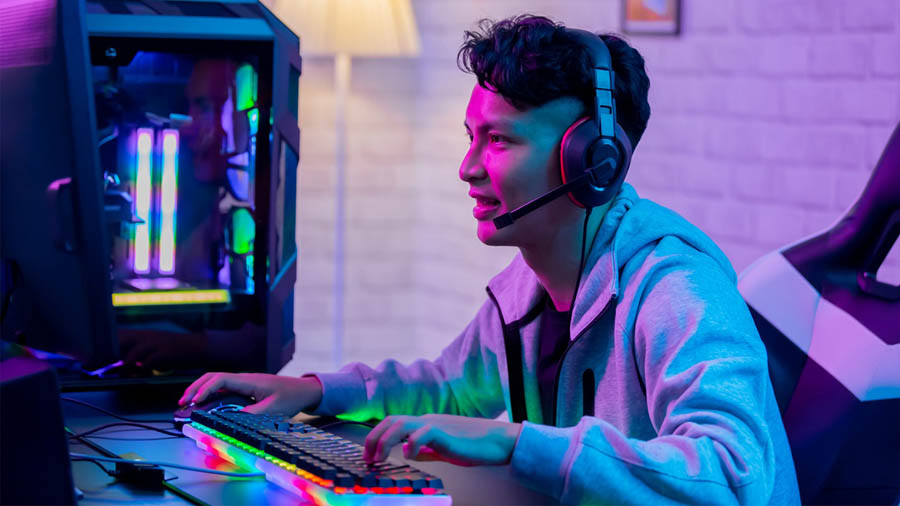
Genre-Specific Reaction Time Insights
A closer look at specific gaming genres reveals how they uniquely test our reflexes and decision-making. Understanding these elements can help refine our practice focus.
1. First-Person Shooters (FPS)
In FPS games like Call of Duty or Rainbow Six Siege, every second counts as you navigate fast-paced environments. Here, reaction time is crucial for aiming and firing before your opponent. Practicing with aim trainers and custom maps, such as those found in Counter-Strike: Global Offensive, can mimic real in-game scenarios, enhancing your speed and accuracy.
2. Real-Time Strategy (RTS) Games
RTS games, such as StarCraft II, test not just speed but also your ability to multitask and strategize swiftly. The pressure to manage various units and resources in real-time demands sharp cognitive flexibility. Practicing scenario simulations that focus on quick decision-making and resource management can be particularly beneficial.
3. Fighting Games
Games like Street Fighter or Tekken demand precise timing and prediction skills. These games challenge players to anticipate an opponent’s moves, requiring lightning-fast reflexes. Using sparring modes or training simulations that emphasize perfect combo execution can help improve timing and reflex anticipation.
4. Racing Games
With titles like Forza Horizon or Gran Turismo, reaction time is key to navigating high-speed tracks and sharp turns. Practicing in time trial modes or using reaction drills can sharpen your ability to anticipate and react to the dynamic changes in track conditions and opponent movements when it comes to how to improve gaming reaction time.
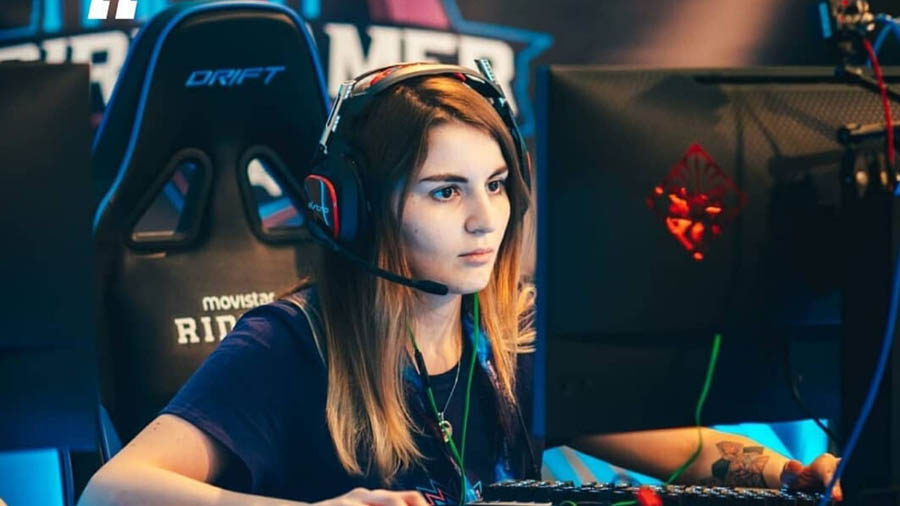
Cognitive Techniques for Reaction Time Enhancement
Enhancing your natural reflexes requires more than just muscle memory; it involves fine-tuning your brain’s processing capabilities.
Visualization and Mental Rehearsal
Engage in visualization techniques by mentally practicing scenarios you might encounter in games. By visualizing successful outcomes, you’re more likely to react instinctively when similar situations arise. This pre-exposure creates a neural pathway, nurturing your brain’s ability to process these scenarios faster in real-time.
Distraction Control Exercises
Training your brain to focus amid distractions can significantly boost your reaction times. Techniques such as noise filtering, where you practice focusing on a task in a loud environment, help improve your ability to concentrate when gaming, especially in competitive settings.
Neuroplasticity Exercises
Exercises that promote neuroplasticity—your brain’s ability to reorganize itself by forming new neural connections—can enhance cognitive functions. Engage in activities like learning a new musical instrument or advanced puzzle-solving to stimulate and strengthen your brain, thereby indirectly improving reaction times.
Gamification of Reaction Training
Turning your practice into fun and engaging games can boost motivation and effectiveness. Look for apps offering gamified reaction training, like Reflexion Edge or interactive brain games that challenge different aspects of reflex speed and cognitive accuracy. These tools transform mundane exercises into enjoyable sessions, keeping you consistently engaged.
The Role of Community and Competition
Engaging in community events or competitions not only motivates but also provides a benchmark for your progress when we discuss how to improve gaming reaction time. Whether it’s participating in local eSports events or joining gamer forums, surrounding yourself with a community of like-minded individuals can inspire and push you to improve. Reflect on matches with peers to understand nuances in strategy and areas for enhancement.
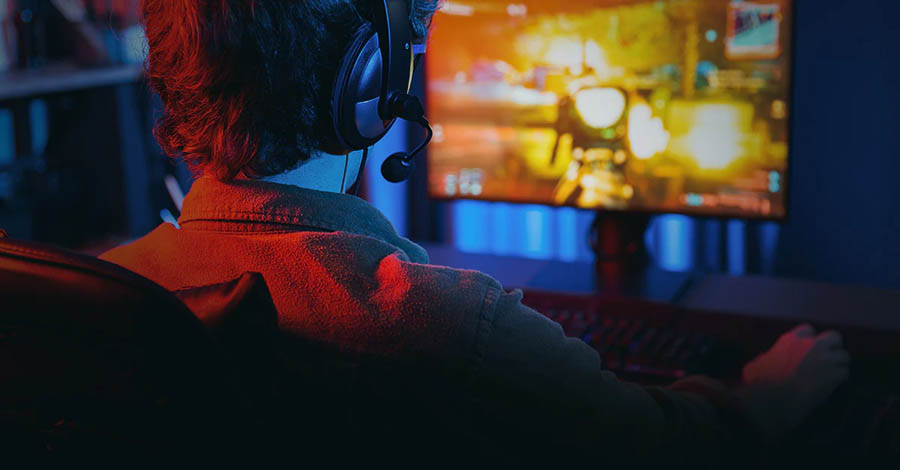
Online Gaming Tournaments
Participating in online tournaments is a great way to test your skills under pressure. These competitions often simulate scenarios that require quick decision-making and adaptability, which are crucial for honing your reaction time and game strategy in high-stakes environments.
Learning from Peers
Collaboration with fellow gamers can offer fresh perspectives and techniques. Watching others play, discussing strategies, and sharing insights can enrich your own understanding and performance. You can also schedule practice sessions with peers to regularly challenge each other, transforming learning into a communal endeavor.
Advanced Tools for Measuring Progress
To truly master reaction time, it’s important to measure and understand your progress over time. Utilize advanced tools and techniques to gauge improvement.
1. Data-Driven Platforms
Platforms like GamerSensei or Metafy provide structured coaching combined with analytical tools. They offer data-driven feedback that helps you understand strengths and weaknesses, pushing you towards informed improvement.
2. Video Analysis
Recording your gameplay and analyzing key moments where reaction time is crucial can reveal patterns and areas needing improvement. This reflective practice helps in creating targeted strategies to overcome specific challenges.
3. Wearable Technology
Wearables that track biometric data can give insights into how physical factors—like heart rate or stress—affect performance. Using this data, you can adjust lifestyle choices to optimize in-game reactions.
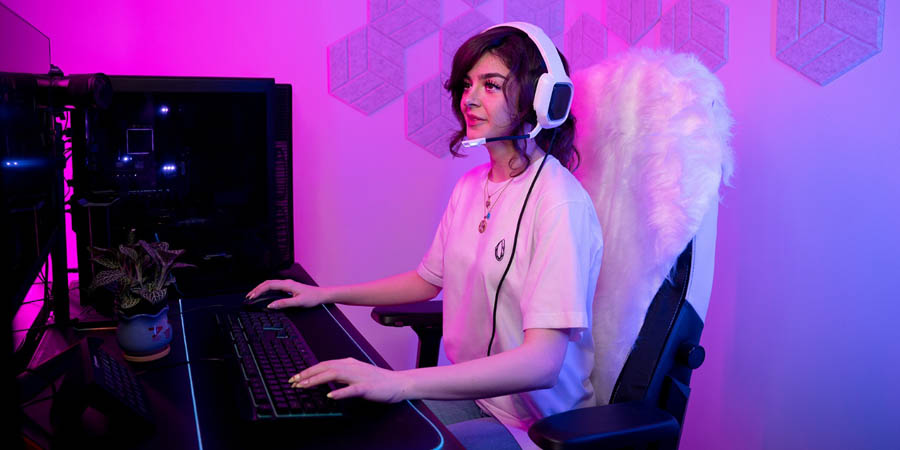
Conclusion: Mastering Reaction Time
How to improve gaming reaction time is a journey worth undertaking. As we’ve explored, numerous factors influence our reflexes, but with dedication and the right strategies, you can enhance your gaming performance significantly. Remember, the key is in the effort—you hold the power to refine your skills. Stay persistent, stay passionate, and enjoy the evolving journey of becoming a more responsive and adept gamer. Happy gaming!
Why are younger gamers often faster in reaction time than older gamers?
The neurological processes associated with reaction time tend to be more efficient in younger individuals, contributing to quicker responses. However, practice and mental agility exercises can help maintain reflexes at any age.
Can playing fast-paced games alone improve my reaction time significantly?
While playing fast-paced games can help, systematic training that focuses specifically on reaction time through targeted exercises is more effective for improvement.
How can I integrate reaction time training into my everyday routines?
You can incorporate mini exercises into daily routines, like quick reaction tests on your phone or practicing with reaction-focused games during short breaks to continuously hone your skills.

